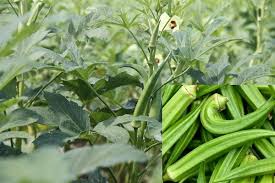Project Report For Lady Finger Farming
Introduction
Project report for lady finger farming is as follows.
Ladyfinger, also known as okra or bhindi, is a popular vegetable in India and many other countries. It is a warm-season crop that is grown for its edible green pods. Lady finger is easy to grow and can be grown in a variety of soils, as long as the soil is well-draining and fertile. In this article, we will discuss the steps involved in lady finger farming in India.
Lady finger seeds should be sown about 1 cm deep in the soil, with rows spaced about 60 cm apart. The seeds should be spaced about 5 cm apart within the row. After sowing, the seeds should be watered well to ensure good germination.

Once the seeds have germinated and the seedlings have grown to a height of about 15 cm, they should be thinned out to one plant per hill. This will allow for better air circulation and prevent the plants from becoming overcrowded.
Lady finger plants should be watered regularly, with the soil kept moist but not waterlogged. Mulching with straw or other organic material can help to conserve moisture and suppress weeds.
Get Completely Custom Bankable Project Report
Harvesting of ladyfinger typically begins about 60-70 days after planting, when the pods are young and tender. The pods should be harvested regularly, as they can become tough and woody if left on the plant for too long.
Market Potential Of Lady Finger Farming
In 2021, the Indian agricultural market had a value of INR 22,516 billion. Looking ahead, the market is expected to grow at a CAGR of 10.5% between 2022 and 2027, reaching INR 41,148.7 billion.
Expenses

Product Cost Breakup

Reveneue Vs Expenses

Market Trend

The market potential for ladyfinger farming in India is significant, as ladyfinger is a popular vegetable in the country and is used in a variety of dishes. Ladyfinger, also known as okra or bhindi, is a key ingredient in many Indian cuisines and is widely consumed in both rural and urban areas.
According to the National Horticulture Board of India, the total production of ladyfinger in the country was 9.8 million metric tons in 2018-2019, with a value of INR 49.5 billion (about USD 678 million). The top-producing states were Uttar Pradesh, Bihar, Andhra Pradesh, Tamil Nadu, and Gujarat.
There is a high demand for ladyfinger in India, both for domestic consumption and for export. The export market for ladyfinger from India is particularly strong, with countries in the Middle East, Europe, and Africa being major importers. In 2018-2019, India exported approximately 1.4 million metric tons of ladyfinger, with a value of INR 7.5 billion (about USD 102 million).
